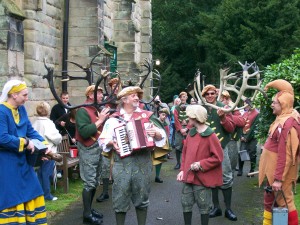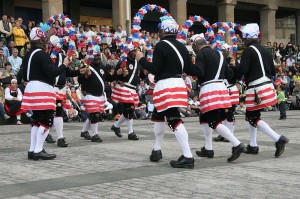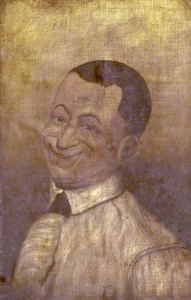On Wakes Monday (the first Monday between the 6th and 12th of September) the small village of Abbots Bromley in Staffordshire is host to a unique Horn Dance. (Details of the event can be found here)

The dancers start the procession at St. Nicholas Church.
The”horns” are six sets of antlers attacked to wooden skulls, three black and three white (although it is notable that Cecil Sharp referred to the black horns as being painted blue and an account from 1686 says they are red.) The horns themselves have been carbon dated to the early 11th century. These horns are on display in St Nicholas Church for the rest of the year, a replica set being used any other time the dance is performed.
The six “Deer-men” are accompanied by a musician playing an accordion, Maid Marian (played by a man), the hobby-horse, a jester or fool, a child with a bow and arrow and another with a triangle. Until the end of the 19th century the dancers were all members of the Bentley family, before the dance was passed to the related Fowell family.
Read more »










































































































